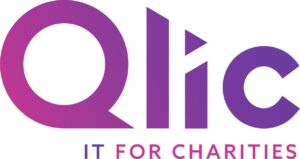
When it comes to operating a nonprofit, how you manage your files and data can make all the difference. From keeping donor records organised to protecting sensitive beneficiary information, good data handling isn’t just an operational concern, it’s a compliance necessity. That’s where secure cloud storage comes in.
When implemented tactically, charity cloud solutions can be a powerful solution offering security, flexibility and long-term cost savings. In simple terms, cloud computing services allow you to store files and data on the internet rather than on-site. This opens the door to simplified collaboration, smarter remote working, and reliable data backups, without compromising security.
In this blog, we’ll walk you through six smart ways your nonprofit can take control of its files using secure cloud storage. From setting clear access rules to automating backups and staying cyber secure, these tips will help you control your data with confidence.
Laying the Foundation: Choosing a Secure Cloud Storage for Your Mission
Before you can simplify file management across your charity, you need a solid foundation. That means choosing the right cloud storage solution: a single, central space for all your documents. This setup reduces scattered files and makes it simpler for your team to find, share, and update what they need, exactly when they need it.
Cloud storage services like Google Drive, Dropbox, Box, and OneDrive are popular choices for charities and often offer free storage with their basic plan. Many of these offer substantial nonprofit discounts or free tiers. But beyond the budget, these platforms bring real advantages:
- seamless teamwork
- remote access
- automatic backups
- version history that lets you recover older file versions when needed.
However, not all cloud platforms are the same. Choosing the right one isn’t just about convenience, it’s about security. For example, Microsoft OneDrive and SharePoint for Nonprofits integrate smoothly with Office 365 and offer strong document management, while Dropbox provides intuitive file sharing with advanced access controls.
So, which security features should you look for in a cloud solution? Here are the essentials:
- Data Encryption
- Data Backup & Recovery
- Access Control and User Permissions
- Compliance and Legal Protection
- Multi-Factor Authentication (MFA)
- Secure File Sharing and Collaboration
Data Encryption
Data security starts with how your data is encrypted, both when it’s stored and when it’s moving.
- Encryption at Rest: Your files are protected on the server using strong encryption algorithms like AES-256. This means that even if someone gains unauthorised access to the server, your data remains unreadable.
- Encryption in Transit: Data is encrypted as it travels from your device to the cloud using TLS or SSL protocols. It ensures that nothing is intercepted in transit.
- End-to-End Encryption: In the most secure systems, only your organisation holds the decryption keys. That means no third party, not even the cloud provider, can access your content.
Data Backup & Recovery
Things go wrong. Files get deleted. Devices get stolen. That’s why built-in backup and recovery features are non-negotiable.
- Regular Backups: Look for automated, scheduled backups that protect your files from accidental loss or hardware failure.
- Disaster Recovery Services: A great provider will also have quick restore options in case of a breach or IT outage, minimising downtime and keeping your charity’s operations running smoothly.
Access Control and User Permissions
Not every team member needs access to every file. Granular permissions are your first line of defence.
- Role-Based Access Control (RBAC): Assign access levels based on job roles. For example, a volunteer doesn’t need the same access as your finance officer.
- Granular Permissions: Fine-tune who can view, edit, or share documents at the file or folder level. This is especially useful in collaborative environments where information needs to be shared but not overshared.
Compliance and Legal Protection
Nonprofits often handle a lot of sensitive data, from beneficiary details to donor records, so compliance is key.
- Compliance with Regulations: Make sure your cloud provider supports industry standards such as GDPR, HIPAA, and CCPA. Data protection laws aren’t optional; they’re essential for safeguarding personal information, maintaining trust and avoiding severe fines and business disruption.
- Data Residency Options: Some platforms allow you to choose where your data is physically stored. This helps you meet local regulations and gives more control over data governance.
Multi-Factor Authentication (MFA)
Even the best passwords can be compromised. Adding an extra layer of security can make all the difference. Ensure your cloud-based platform provides:
- Strong User Authentication Options: In simple terms, strong user authentication or multi-factor authentication (2FA) means users need more than just a password, such as a one-time code, fingerprint, or authentication app, to log in. It’s one of the simplest yet most effective ways to block unauthorised access.
Secure File Sharing and Collaboration
Nonprofits rely on collaboration across departments, with remote teams, and sometimes with external partners like volunteers. That’s why secure sharing and collaboration tools are essential.
- Secure Links: Share documents through password-protected links or set expiry dates to limit how long files stay accessible.
- Activity Monitoring: See who accessed a file, when they viewed it, and what changes were made. It’s a handy feature for maintaining transparency and accountability.
For more practical ways to work better with others, check out our tips on collaboration best practices.

6 Data Management Tips for Nonprofits Using Secure Cloud Storage
Once you’ve selected a secure cloud service, it’s time to put together a plan to keep your data organised, accessible and protected.
These six tips will help your nonprofit manage files more efficiently, boosting productivity while staying compliant.
- Setting Up an Easy Naming Convention
- Organise Files with a Clear Folder Structure
- Implement Strong Access Controls and Permissions
- Password Management
- Define Specific Retention Periods
- Regularly Back Up Your Data and Maintain Data Hygiene
Setting Up an Easy Naming Convention
If you’ve ever wasted ten minutes hunting for a file, or worse, opened five versions of the same document just to find the right one, you already know why naming conventions matter.
Having a consistent naming system for your files is a game-changer when juggling multiple projects and grant cycles. It cuts down on confusion, helps you find documents faster, and makes onboarding smoother for new team members or volunteers.
Good example of file naming and format:
- [YYYYMMDD]_[DocumentType]_[ProjectName]_[VersionNumber].docx
- Example: 20250508_GrantProposal_YouthEmpowerment_V3.docx
Top tips for naming success:
- Start with core elements: Date (YYYYMMDD), Document type (e.g., DonorReport), Project name, Version.
- Keep it clear: Avoid vague labels like “FinalFINAL_reallyfinal.docx.”
- Use consistent separators: Underscores or hyphens improve readability across platforms.
Organise Files with a Clear Folder Structure
A cluttered cloud environment is just as confused as a messy filing cabinet. Designing a clear, intuitive folder structure helps staff and volunteers find what they need quickly and ensures sensitive information is stored in the correct place.
An example of a clear folder structure could be:
Organisation-Wide:
- Board Documents
- Legal & Compliance
- Financials
- HR & Administration
Program Folders:
- Youth Empowerment Program
- Participant Records
- Curriculum
- Reports
This structure grows with your organisation while keeping everything easy to navigate.
Implement Strong Access Controls and Permissions
Strong access control is essential, not everyone needs access to everything.
Most cloud platforms offer detailed permission settings. For example, SharePoint Groups, within Microsoft 365, allow you to assign access based on department. Finance can be restricted to budget files, while marketing has full control over branding assets. This structure doesn’t just protect your data, it also improves efficiency.
Google Drive offers similar control with Shared Drives. You can create separate folders for each department and assign edit, view or comment-only access.
Password Management
Even the most secure cloud setup can be undone by weak passwords. That’s why regular password training is a must.
Teach your team how to:
- Create strong passwords using a mix of upper/lowercase letters, numbers and symbols.
- Avoid reusing the same password across accounts.
- Use trusted password managers like LastPass or 1Password to keep credentials secure without the sticky notes.
This is one of the simplest ways to protect your data from unauthorised access.
Define Specific Retention Periods
Keeping everything “just in case” rapidly leads to digital overload. Define how long documents should be kept based on type and regulatory requirements.
Suggested retention periods:
- Donor records: 7 years after the last donation
- Grant applications (successful and unsuccessful): 5 years
- Financial audit reports: Retain permanently
- General admin documents: 2 years
Once the time’s up, securely delete files using your cloud provider’s deletion tools, or a secure wiping tool if needed.
Regularly Back Up Your Data and Maintain Data Hygiene
Your cloud provider may offer great built-in protection, but that doesn’t mean you should skip backups. Regular audits and backups are fundamental for long-term peace of mind.
Some best practices should include:
- Regular audits: Clean out outdated or duplicate files and fix errors.
- Automated backup configuration: Use your provider’s versioning and snapshot tools to set daily or weekly backups.
- Third-party backup tools: Consider adding a second layer of protection with services like Backblaze or Acronis. This ensures your data is protected even if there’s an issue with your primary cloud storage provider.
Final Thoughts
Effective data and file management in nonprofits isn’t just a technical requirement; it’s a strategic advantage for nonprofits. Whether you’re handling donor records, grant applications or sensitive beneficiary information, having the right policies and tools in place ensures your organisation stays compliant, efficient and secure.
By employing secure cloud storage, setting up consistent naming conventions, controlling access, and performing regular backups, you can drastically reduce risk and improve collaboration across your team.
Just as crucial is equipping your staff and volunteers with the knowledge to use these systems confidently. Clear policies, ongoing training, and a commitment to data storage best practices lay the groundwork for long-term success.
Would your charity like to learn more about correct data management and cloud storage solutions? Get in touch with the team at Qlic here.




